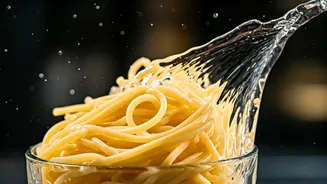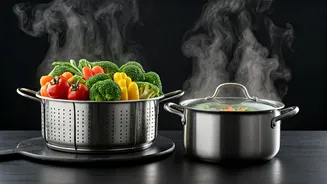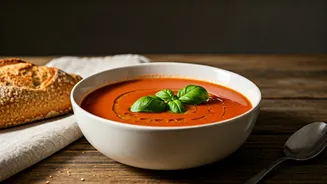The Science of Ice
Adding ice to pasta water may seem counterintuitive, but it leverages a basic understanding of starch and temperature. When pasta cooks, the starch on
its surface gelatinizes, absorbing water and creating the familiar al dente texture. Introducing ice water effectively lowers the overall temperature, preventing the pasta from overcooking and becoming mushy. This process slows down the starch absorption, which gives you greater control over the cooking process. The chilled water also helps to maintain a consistent cooking temperature. The ice acts like a temperature regulator, allowing for more even cooking throughout, resulting in perfectly textured pasta every time. This technique also influences the way your sauce clings to your pasta. This helps to make pasta a delicious experience.
Boosting Texture, Taste
By incorporating ice, the surface of the pasta becomes more resistant to overcooking, giving you better control over the final texture. This technique is especially useful if you want a perfect al dente bite. The impact is noticeable when you bite into the pasta. The texture becomes firmer, and it retains its shape better. Beyond texture, ice can indirectly enhance taste. When the pasta cooks at a more consistent temperature, it releases its flavors more evenly, allowing for a better integration with the sauce. Adding ice provides a brief temperature shock that helps to create a slightly rougher surface. This gives the sauce more grip, ensuring that every strand is coated perfectly. The simple addition of ice is also cost-effective and improves overall cooking.
How to Implement
Implementing this technique is simple. Begin by boiling your pasta water as usual. Just before adding the pasta, toss in a handful of ice cubes. The amount of ice depends on the quantity of pasta you're cooking; a rough guide is about 1/2 cup of ice for a standard pound of pasta. Be careful not to add too much ice, as this could drop the temperature excessively and impact cooking. After adding the ice, give the water a few seconds to stabilize, then add the pasta. Cook the pasta as per package instructions, keeping a close eye on it as the ice may slightly affect the cooking time. The key is to watch the pasta carefully and test it often to achieve the desired texture. Once the pasta is cooked, drain it immediately and add your sauce.
Beyond the Basics
This technique works best with various pasta shapes and sizes, from spaghetti to penne to farfalle. Experimenting with different types of pasta will allow you to see how each holds up with the ice technique. The effect is most pronounced with longer pasta shapes, but all shapes will benefit. When it comes to sauces, ice-treated pasta is especially ideal for lighter sauces like olive oil and garlic or fresh tomato sauces. The texture of the pasta complements the sauce, ensuring a pleasant eating experience. Consider incorporating this technique in your usual pasta-making routine. You'll find that it makes pasta cooking an even more delightful experience. By simply adding ice you can improve the taste and texture of your next pasta dish.












